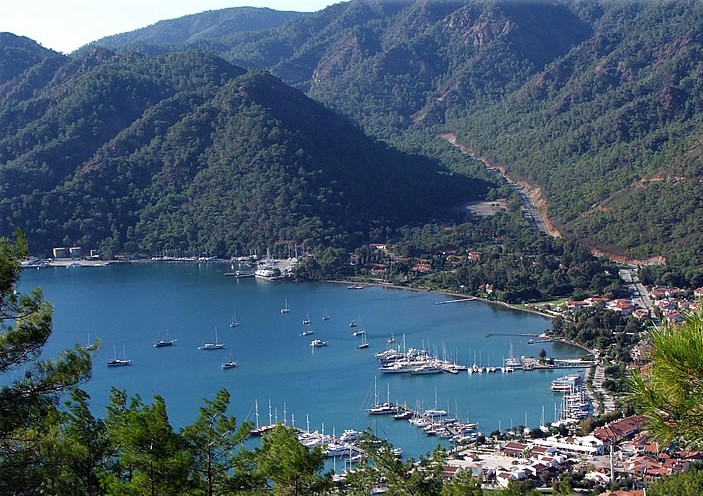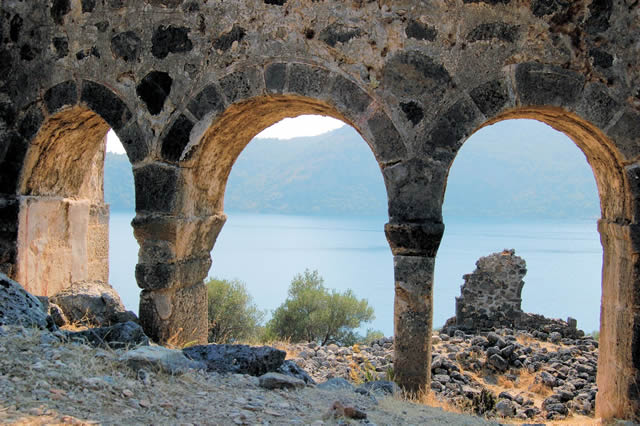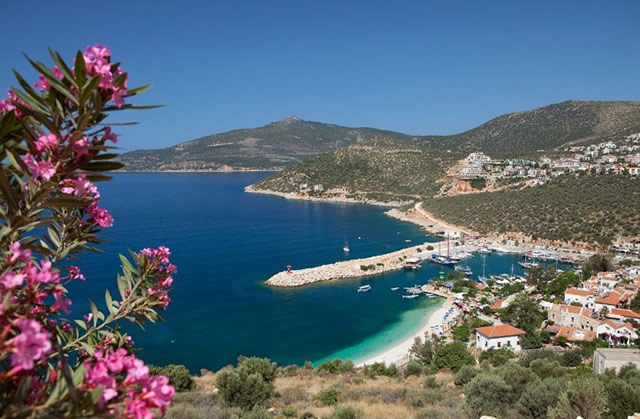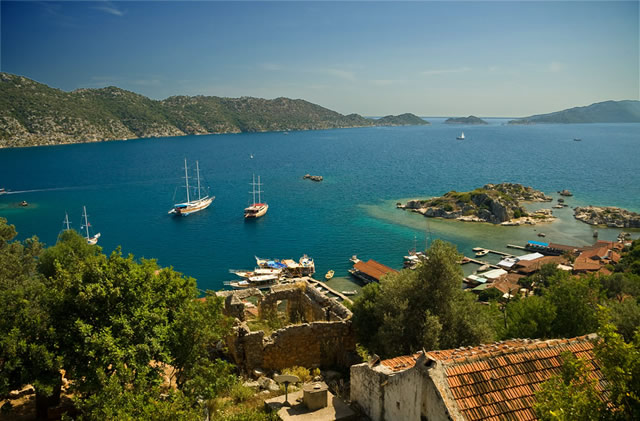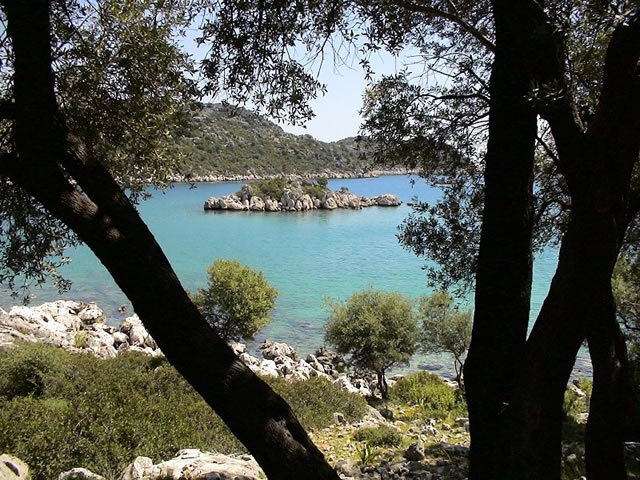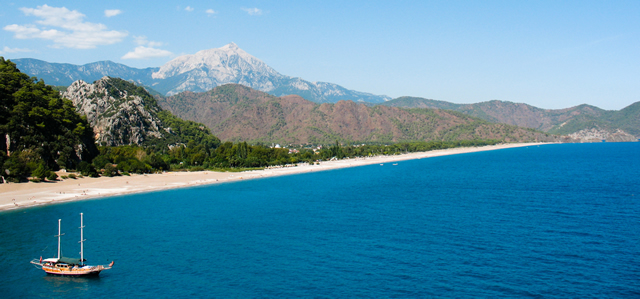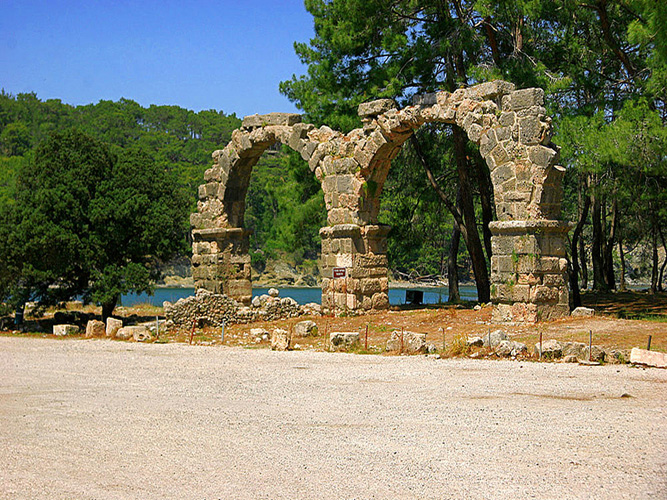
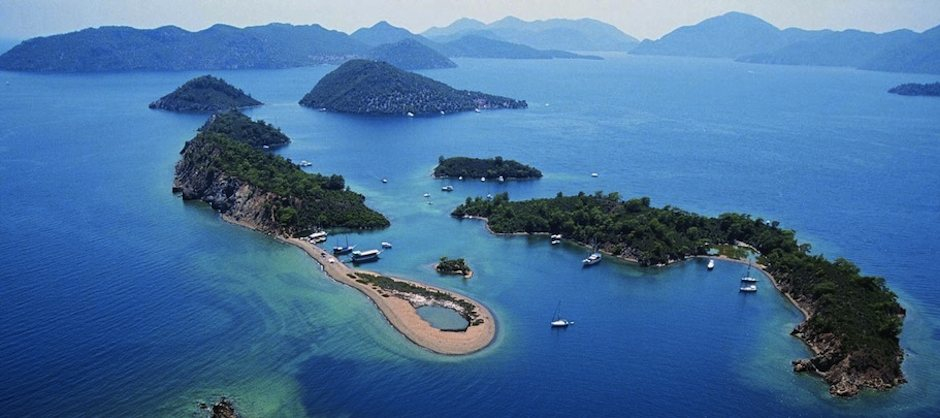
One of the most historically rich sailing routes along the Eastern Mediterranean coast of Turkey, is the Lycian coast. You are bound to find more archaeological sites and ancient coastal settlements in and around the Mugla and Antalya provinces than anywhere else on the southern coast.
The Lycian civilization goes as far back as the Bronze Age and known to records in history since ancient Egypt. All throughout the turquoise coast of Turkey, travelers will find ruins from Lycia scattered both inland and along the beautiful shores of the Med. It’s amazing how much territory was occupied by the Lycians. Our journey begins in the charming town of Gocek.
Gocek
If ever there was a unique seafaring journey on board a luxury Turkish gulet charter, it would be have to be this one. Gocek port is a peaceful and lush region to begin a gulet voyage. It is also one of the most preferred harbor to embark from due to its close proximity to the Dalaman Airport – a mere 20 minutes. After a informative orientation and settling in for the day, guests are served lovely dinner in anyone of the nearby private bays while taking in the impressive scenery. Then its time for a good rest and relaxation before the start of a magical cruise into the world of ancient Lycia.
Gemiler Island
The following morning, like each morning for one week, a beautiful Mediterranean breakfast is served and then its time to begin a new explore. The first place of anchorage is Gemiler Island. According to archaeologists, it is believed to be the place of St. Nicholas’ tomb – when later his remains were taken to the ancient town of Myra. Travelers will see ruins from the Byzantine period of five churches which were built around 4th – 5th A.D. In addition, there are approximately fifty Christian tombs and 40 0ther religious buildings.
The bay offers clean and clear waters and it is a very quiet place for swimming and snorkeling.
Kalkan
A location worth seeing, a bucket-list destination, Kalkan is truly an exquisite town boasting with impressive scenery and atmosphere. The influence of Greek Ottoman architecture is seen in the white-washed houses decorated with bougainvillea. There are shops and lovely restaurants and cafes to enjoy the local cuisine. Kalkan’s place in Lycian history was considered a hiding place during times when pirates anticipated attacks on merchant ships passing by. It was and still is, a great sheltered harbor for boats during times of rough seas. Nearby Kalkan an inland excursion to the ancient site of Arycanda is a must.
A very unique Lycian city and known to be the oldest.Feature sites to see while there is the largest bath complex, the agora, amphitheatre, the Odeon, the Stadium, Necropolises with monumental and temple tombs and sarcophagi; and Bouleuterion – the meeting place of the council.
Kas
Neighboring Kalkan to the west, is the magnificent town of Kas in Antalya province. It is a touristic place, yet unspoiled and well preserved natural surroundings and beautiful Mediterranean waters. The town sits on a slope which leads to the sea offering stunning panoramic views of the whole region. The hillsides produce local pine honey and almonds – a great fresh treat to take with you to try during your blue voyage travels. Kas, known also as the Teke peninsula was discovered by the Lycians. Once an important site, the region offers the richest Lycian necropolis. Occupied since the stone age, Kas region has seen many other civilizations in time. From the Romans and Byzantines, to the Ottomans and Greeks. Nowadays the Greek architecture is seen from when the Greeks had left Kas.
As for holidaying, one of the best diving spots in Turkey is located in Kas with over 15 diving centres. Other activities include paragliding, kayaking, canyoning, and various other water sports activities.
Truly a place to enjoy, Kas town is a very quiet place sandwiched in between the deep blue sea and lush pine forests, while a stroll through its narrow streets will offer you the pleasant scents of Jasmin, little local cafes and restaurants to relax and take in the atmosphere.
Kekova, Simena, Ucagiz
A major Lycian settlement, the region is another must-see place along the turquoise coast and probably the only place in the area where you can actually watch flying fish. It comprises of interesting islands, bays and ancient cities including the sunken city of Simena – where half is in the water and half on land. Other than the significant cultural and historical characteristics, Kekova is composed of amazing natural beauty. A specially protected area, Kekova provides a truly blissful atmosphere and great for swimming and snorkeling. Very nearby are necropolis’ in the villages of Simena and Teimussa which make for a pleasant trek during your blue voyage destinations explore.
Demre
Located inland is the Church of St. Nicholas (Santa Claus) in the Lycian town of Myra (today’s Demre). The tomb of St. Nicholas is popularly visited by Christian pilgrims. Demre is situated on the coast of the Teke peninsula with the magnificent backdrop of the famous Taurus Mountains. Other than the historical church, Demre offers local handcrafts such as rugs, as well as the annual Camel Wrestling Festival.
Gokkaya Bay
The largest bay in the Kekova region is the Gokkaya Bay. It is a quiet and popular place of relaxation during a luxury gulet cruise holiday with three entrances into the bay. Gokkaya Bay is beautiful place for swimming and snorkeling and known to be a convenient shelter harbor during rough seas.
Olympos
Another stunning Lycian city located right off the shore is the protected Olympos, founded during the Hellenistic period and named after today’s Mt. Tahtali. An underdeveloped village there is nothing much for touristic facilities except for a few seaside local restaurants during season. To see the ruins there is a small fee and you can access these Lycian ruins, scattered throughout the area in fragments, from the beach. Olympos is famous for its Treehouse style bungalows.
The ruins are quite impressive, although it may be that you will have to hike a bit to see some of them. Olympos features Chimera. Either a hike (45 min.) or a bus trip will lead you to the Eternal Flames – produced from self-ignited natural gas jets on the side of the hill. The thousands of years old Flames of Chimera were inspired by the myth of Bellarophon and rather interesting to see – as in ‘Chimera and Bellarophon’.
Phaselis
The next ancient site from the Lycian period is Phaselis. It is an ancient city situated in between the Bey Mountains and the Olympos National Park. Phaselis was a very important harbor city in Lycia and the centre of commerce among the Greeks, Asians and Egyptians. Occupancy of Phaselis was lived through by many civilizations including Alexander the Great.
There are three harbor of Phaselis; namely the Northern harbor, the Battle harbor and the Protected harbor – being the most important one today. There are numerous feature sites to see while there. There is 24 meter wide ancient street. Located on the southern side of this street is The Hadrian Waterway Gate. Ancient ruins of shops, public places, baths, agoras, theatures, as well as sarcophagi can be seen.
The Final Destinations
The trip then continues to the holiday resort town of Kemer for a dip and sightseeing, and completes with disembarkation in Antalya. So if you’re after an abundance history and interesting ancient sites and cities, this Lycian coast luxury gulet cruise will offer amazing non-stop scenery all along the whole coast, combined with crystal clear waters in private bays and secluded coves, and certainly plenty of peace and pleasure.
The Lycian coast and all of its incredible ruins and ancient sites are certainly one of the must-see regions, if your travels lead you to Turkey. How luxurious you choose this journey to be, depends on the gulet accommodation you decide to charter – while the destinations… will always remain equally pleasurable, just as it has been for thousands of years.
Have you visited any ancients sites along Southern Turkey before? What was your experience like?




